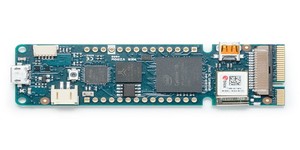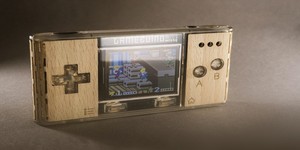
The Arduino team has officially launched the Due, a more powerful version of its eponymous microcontroller designed for those who have outgrown the eight-bit original.
Originally built to help students learn about electronics and programming, the Arduino project has gone from strength to strength with its open-source hardware design. While the latest revision, the Leonardo, includes some new features, all Arduinos have had one thing in common: they are all built around eight-bit microcontrollers from Atmel running at 16MHz.
For most of the tasks you would want an Arduino for - sensing, control and other simple but real-time projects - that's fine. Some programmers, however, have found themselves outgrowing the device, and while third-party designs based on the Arduino but featuring 16- or even 32-bit controllers have been created, there has been little from Arduino itself - until now.
The Due, designed to take over from the ATmega328-based Uno, replaces the eight-bit microcontroller with a 32-bit ARM Cortex-M3 processor running at 84MHz - a significant increase in power. The Atmel SAM3X8E, the chip at the heart of the new Due, is claimed to be able to handle sampling rates from the integrated analogue or digital inputs of up to 1 megasamples per second (1MS/s) - up from 15 kilosamples per second (15KS/s) of the Uno and Leonardo.
To help users take advantage of the extra power, the Due comes with an integrated digital-to-analog converter - the first Arduino to feature such hardware. As a result, it's possible for the Due to output true analogue signals rather than faking it through pulse-width modulation (PWM) as in previous designs. That said, PWM is still present and correct on the same pins as the Uno and its predecessors for compatibility with existing Arduino add-on 'shields.' The number of inputs and outputs have been boosted to 54, with 12 new analogue output pins for the DAC.
The biggest change, however, could spell trouble for those hoping the Due will be a drop-in replacement for the Uno or Leonardo: rather than the 5V logic previous official Arduinos have used, the Due uses 3.3V logic - the same level as the equally ARM-based Raspberry Pi microcomputer. As a result, those wishing to interface the Due with 5V hardware will need a level converter.
The Due is due (sorry) to go on sale later today, priced at $49.
Originally built to help students learn about electronics and programming, the Arduino project has gone from strength to strength with its open-source hardware design. While the latest revision, the Leonardo, includes some new features, all Arduinos have had one thing in common: they are all built around eight-bit microcontrollers from Atmel running at 16MHz.
For most of the tasks you would want an Arduino for - sensing, control and other simple but real-time projects - that's fine. Some programmers, however, have found themselves outgrowing the device, and while third-party designs based on the Arduino but featuring 16- or even 32-bit controllers have been created, there has been little from Arduino itself - until now.
The Due, designed to take over from the ATmega328-based Uno, replaces the eight-bit microcontroller with a 32-bit ARM Cortex-M3 processor running at 84MHz - a significant increase in power. The Atmel SAM3X8E, the chip at the heart of the new Due, is claimed to be able to handle sampling rates from the integrated analogue or digital inputs of up to 1 megasamples per second (1MS/s) - up from 15 kilosamples per second (15KS/s) of the Uno and Leonardo.
To help users take advantage of the extra power, the Due comes with an integrated digital-to-analog converter - the first Arduino to feature such hardware. As a result, it's possible for the Due to output true analogue signals rather than faking it through pulse-width modulation (PWM) as in previous designs. That said, PWM is still present and correct on the same pins as the Uno and its predecessors for compatibility with existing Arduino add-on 'shields.' The number of inputs and outputs have been boosted to 54, with 12 new analogue output pins for the DAC.
The biggest change, however, could spell trouble for those hoping the Due will be a drop-in replacement for the Uno or Leonardo: rather than the 5V logic previous official Arduinos have used, the Due uses 3.3V logic - the same level as the equally ARM-based Raspberry Pi microcomputer. As a result, those wishing to interface the Due with 5V hardware will need a level converter.
The Due is due (sorry) to go on sale later today, priced at $49.

MSI MPG Velox 100R Chassis Review
October 14 2021 | 15:04








Want to comment? Please log in.